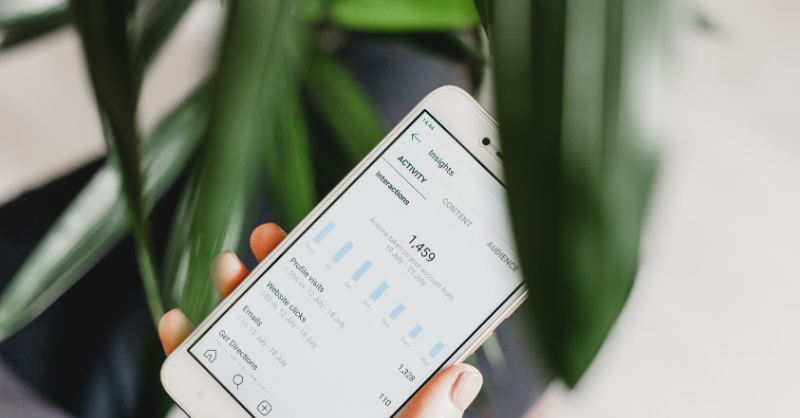How to impress your clients with proper social media reports

Table of contents
Updated in April, 2019
As a marketing agency, you know your clients need results. Especially on social media, which is uncharted territory for many B2B brands, it’s going to be increasingly important for agencies to show exactly how a presence on social networks will yield clicks, conversations, and conversions.
Here’s where social media reports come in. B2B marketers who give their clients detailed reports that clarify how specific marketing tactics contribute to business growth will inspire ever-growing trust, solidifying their credibility as proven experts. Demonstrating ROI is no easy task, as the 52% of marketers who cite proving social ROI as their number-one biggest social marketing frustration will attest. Nonetheless, returns on social media initiatives can be demonstrated in detailed reporting that shows how each client’s unique challenges and goals are met.
Here are a couple of reports that can impress upon your clients how well their social media marketing is serving them:
Campaign-specific reports
With some of your larger clients, you might have multiple campaigns to manage or report on. These campaigns might be categorized by vertical market, buyer persona, product, or any number of other considerations. Then, each campaign might have specific KPIs in view, or goals such as extending brand reach into a certain market or generating a certain number of leads through a certain channel.
How can you make sense of each of these campaigns and the specific ambitions they represent, and then interpret the results of your labor to your clients? The answer is to use a proven social media management platform that can produce campaign-specific reports. By tracking objectives separately for each marketing goal, KPI, product or any other relevant item, you’ll much more easily distinguish between your efforts to address each, within and across campaigns. And, your clients will have a much easier time understanding the value of your services in meeting every specific marketing need, big or small.
Reporting by social media channel
It’s a fact of marketing life: some channels are going to outperform others. That’s especially true for social media channels, and for each client and campaign, smart B2B marketers will clarify which social networks are winners and losers in the quest for lead acquisition and brand awareness.
Provide your clients an overview of how well certain social channels are helping them meet key objectives, and you’ll impress them with your awareness of, and careful attention to, what works for them. With social media analytics organized by channel, you’ll be able to show clients, for example, that their targeted Facebook ads and image posts garner a little bit of engagement, but their LinkedIn blog posts, status updates, and LinkedIn Group participation get much more. In this way, you’ll not only demonstrate which channels are most important in terms of lead attribution and acquisition, but channels are most important in terms of lead attribution and acquisition, but why.
Recommended for further reading
Reporting on conversions and KPIs
How well do specific tactics cause leads to convert to customers? You’ll find out, and help your clients see the light as well, through conversion tracking.
Conversions can happen because of a brand’s peculiar affinity among a certain social network’s users, a certain type of message (for example, social posts composed of questions vs. statements, or images vs. videos), or any number of other factors in social media content. It’s up to you as an agency to distil the specific conversions you’ve created, as organized by campaign or social channel, and extract what works for your clients.
For example, articles with images get 94% more views than those without, but you might find that an image-based Twitter Card for your client is a standout success, causing your client’s case study downloads to skyrocket, whereas a Google+ image-based posts gets hardly any notice at all among your client’s followers. Or, that same Twitter Card works amazingly well, compared to another Twitter Card that was similar and underperforming, contrary to expectations. By analyzing exactly what aspects of social posts are increasing conversions for your client, you’ll be able to confidently show them why certain things work and will likely continue to work.
It’s also necessary to take note of particular KPIs of importance to your clients—those they’ve identified as meaningful, as well as those that aren’t on their radar but are nonetheless important. Within your campaign- and channel-specific reports, you might want to highlight numbers such as engagements, likes, Retweets, and shares. Also track some more revealing stats, such as downloaded content, social web traffic, and brand mentions per channel. Even further, a platform with social media listening capabilities will help you track such things as mentions and hashtags, which are both enlightening and important for demonstrating the impact of your clients’ social messaging on brand recognition.
The presentation: making the case to clients
Armed with all of the above, you’ll have all of the elements to demonstrate your expertise to clients, and inspire confidence in your proven results. But there are a few key things to keep in mind as you present your reporting:
- Go light on the hard data. Data is important, but don’t just present lists of numbers to clients without context. Use charts and graphs, and explain the numbers in simple, easy-to-grasp language that eliminates any potential confusion and clearly shows connections between tactics and measurable results.
- For the bad numbers, highlight what you’ll do to correct them. Of course, even if you follow best marketing practices on all channels, some social media tactics will fail to perform as well as hoped. But your agency should have several tricks up the sleeve to rectify the problem. Whether the cause of the disappointment was using the wrong tone in the content, or posting at a less-than-ideal time of day for maximum engagement, thorough, detailed reporting that doesn’t shy away from the less-exciting numbers can be used to show clients why a change in direction will be helpful.
- Make projections for your clients based on the good numbers. For the tactics and techniques that have worked, put the numbers right up front, where clients can immediately see them and be impressed—as they should be! Then, use that momentum to show clients what continued investment in your marketing services can do for them, and be sure to hear them out on their marketing goals over the next few quarters and years. You can expect customer loyalty, as long as you demonstrate a commitment to meeting their goals, along with the proven know-how for getting the job done.
By showing your clients clearly and unashamedly how their marketing dollars have produced measurable results, and being transparent in every aspect of your reporting, you’ll set the stage for retaining your clients and for more referrals to come your way.
Results are what impress B2B marketing clients. Through the right tools and carefully thought-out reporting, you’ll have everything you need to show those clients the results they want to see—and potentially solidify your partnership with them for a long time to come.




